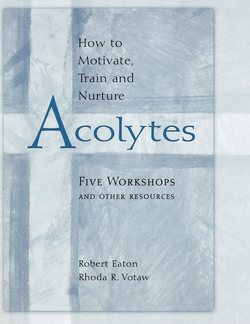Читать книгу How to Motivate, Train and Nurture Acolytes - Robert Ormston Eaton - Страница 10
На сайте Литреса книга снята с продажи.
ОглавлениеTraining “Nuts and Bolts”
The Training Team
You are the best judge of the resources that you will need and that will be available to carry out two important aspects of the training job:
conveying information about the tasks to be done and the way to do them, and
encouraging the growing acolyte community.
A clergyperson and an acolyte director would be the ideal primary team, with the director carrying the planning and organizing burden. However, have as many additional people as possible involved on the extended training team to provide a variety of perspectives on the ministry. For example, an altar guild member, an experienced or even a former acolyte, or a seminarian could play an important role. Occasional visits by clergy from other parishes would provide a different and broadening point of view.
Schedule Options
A variety of workshop experiences will deepen the acolytes’ understanding of their roles and responsibilities. Depending on available time, personal schedules, the size of the group, segments of the series that follows could be used one at a time (say, one every two weeks), or several could be grouped together for a longer session. The key to developing an effective training schedule is that the pattern be cyclical. The workshops, in whatever order, should be repeated annually—bi-annually if possible—to hone skills of current acolytes and to bring new acolytes into the fold.
